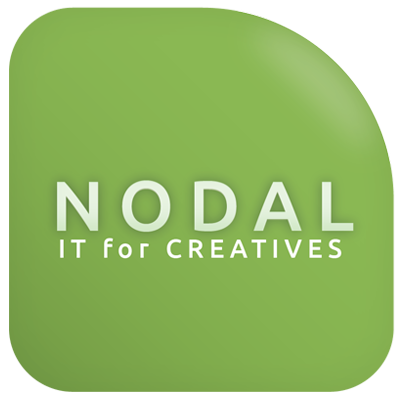Apple has long been the standard-bearer for creative hardware (see if you can walk into a graphics or edit shop and not see the Mac logo in the first half-second), so it's always big news when they release a new device. Apple’s previous pro release, the cylindrical ‘trashcan’ Mac Pro in 2013, is ancient by hardware standards, so the recent release of the new iMac Pro is a welcome and long overdue sight to creative professionals.
The iMac Pro packs an impressive level of hardware under its familiar all-in-one hood. Boasting at minimum an 8-core Intel Xeon processor (configurable to a whopping 18-core behemoth), a built-in 27-inch 5K Retina display and support for two additional 5K monitors (or up to 4 4K monitors!), Apple’s newest offering has some serious graphical and processing muscle. This sets it far ahead of the standard iMac models and even blows the old Mac Pro platform out of the water.
Beyond raw computing power, the new iMac Pro boasts exceptional network and peripheral connectivity options. Perhaps most notable is the iMac Pro’s built-in 10 gigabit Ethernet support, the power of which cannot be overstated. As more and more of Nodal’s clients incorporate 10Gbit Ethernet into their production backbones, the iMac Pro is one of the few systems available that supports this as a baseline feature.
The iMac Pro also ships with 4 Thunderbolt 3/USB-C ports (on two separate buses) and 4 USB 3 ports, providing plenty of capacity for attached storage, additional displays, input devices, and other peripherals.
As always, all this comes with a price. The bare minimum specs will set the buyer back $5000, and a system with maxed-out memory, storage, CPU, and graphics card works out to an eye-popping $13,200. This brings up an all-important question for any small creative studio: is the investment worth it?
In general, the answer is yes. Apple products are not going away anytime soon, and the new iMac Pro is their only current solution to provide the kind of horsepower necessary for intense high-end creative work (especially editing and 3D production).
The last Mac Pro model was released all the way back in 2013. While the more recent Retina iMacs have helped fill the gap in the interim (especially for users with lighter computing requirements), that’s a very long wait for power users looking for an upgrade. Whether Apple continues with more regular iMac Pro releases remains to be seen.
As for how much to spend on a new system, it may be tempting to opt for the bare-bones model just to get the new system in the door, but bear in mind that an 8-core CPU will become obsolete much earlier than a 10- or 14-core system. Investing that extra money for a little extra power can lead to a solution that will carry its weight for an extra year or two without breaking the bank. It’s also important to note that the iMac Pro cannot be upgraded post-purchase (though an Apple service center can upgrade the RAM), so plan ahead to ensure the system will do what you need it to do over the next few years.
Nodal recommends a mid-range build including the 10-core CPU (Autodesk’s recommended configuration), improved graphics card, the baseline 1TB SSD storage, and 64GB of RAM, which prices out at $7200 without external storage.
Overall, if you’re an editor, designer, or 3D animator in need of a powerful pro solution, the iMac Pro will suit your needs for the foreseeable future. This is a high-powered, sturdy, and familiar solution for your creative workplace. If you're looking for a better value or have lighter demands for your computing power (such as many users working with Adobe products) you may be better served by the standard iMac model or the older (but still sturdy) Mac Pro.
Be advised that the new iMac Pro running OS X 10.13 High Sierra ships with Apple’s latest APFS file system. For additional pricing options and to spec out your own iMac Pro, head to Apple’s website. Feel free to get in touch with us if you have questions specific to your facility.
